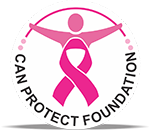Breast cancer screening usually means examining a woman’s breasts for cancer prior to there are signs or symptoms of the disease. Three main tests are used to screen the breasts for cancer. Speak to your doctor about which tests are right for you, and when you should have them.
Mammogram
A mammogram is an X-ray of the breast. Mammograms are the most effective way to find breast cancer early, when it is much easier to treat and prior to it is big enough to experience or cause signs and symptoms. Having regular mammograms can reduce the risk of dying from breast cancer. Can Protect Foundation recommends that if you are 50 to 74 years old, be sure to have a testing mammogram every two years. If you are 40 to 49 years old, speak to your doctor about when to start and how frequently to get a screening mammogram.
Are you worried about the cost? CPF offers free or low-cost mammograms. Find out if you qualify.
Clinical Breast Exam
A clinical breast examination is an test by a doctor or nurse, who uses his or her hands to feel for lumps or other changes.
Breast Self-Exam
A breast self-exam is when you examine your own breasts for lumps, variations in size or shape of the breast, or any other changes in the breasts or underarm (armpit).
Which Tests to Select?
Having a clinical breast exam or a breast self-exam have not been identified to reduce risk of dying from breast cancer. At this time, the most effective way to find breast cancer is with a mammogram. If you decide on to have clinical breast examinations and to carry out breast self-exams, be sure you also get mammograms regularly.
Where Can I Go to Get Screened?
Most probably, you can get screened for breast cancer at a clinic, hospital, or doctor’s office. If you want to be screened for breast cancer, contact your doctor’s office. They can help you plan an appointment. Most health insurance companies pay for the cost of breast cancer screening tests.
